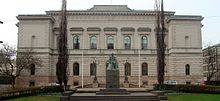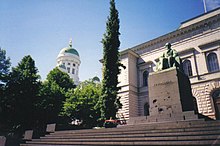
The markka was the currency of Finland from 1860 until 28 February 2002, when it ceased to be legal tender. The markka was divided into 100 pennies, abbreviated as "p". At the point of conversion, the rate was fixed at €1 = 5.94573 Mk.
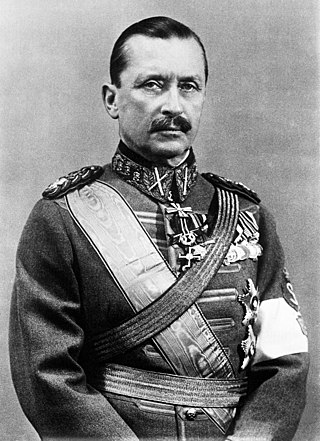
Baron Carl Gustaf Emil Mannerheim was a Finnish military leader and statesman. He served as the military leader of the Whites in the Finnish Civil War (1918), as Regent of Finland (1918–1919), as commander-in-chief of the Finnish Defence Forces during the period of World War II (1939–1945), and as the sixth president of Finland (1944–1946). He became Finland's only field marshal in 1933 and was appointed honorary Marshal of Finland in 1942.

Risto Heikki Ryti was a Finnish politician who served as the fifth president of Finland from 1940 to 1944. Ryti started his career as a politician in the field of economics and as a political background figure during the interwar period. He made a wide range of international contacts in the world of banking and within the framework of the League of Nations. Ryti served as prime minister during the Winter War and the Interim Peace, and as president during the Continuation War.

The Governor of a province of Finland headed the activities of the State Provincial Office until the end of 2009, when the provinces were abolished. The governors were appointed by the President. Many former ministers including but not limited to Kaarlo Hillilä, Martti Miettunen, Hannele Pokka and Anneli Taina served as governors, since the post was regarded as prestigious enough for a retiring minister, but still politically neutral. The title of maaherra was also considered a personal title, such that once appointed, the title maaherra remained for life.
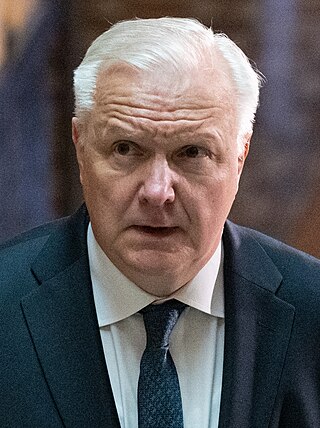
Olli Ilmari Rehn is a Finnish economist and public official who has been serving as governor of the Bank of Finland since 2018. A member of the Centre Party, he previously served as the European Commissioner for Enlargement from 2004 to 2010, European Commissioner for Economic and Monetary Affairs and the Euro from 2010 to 2014, and Minister of Economic Affairs in Juha Sipilä's cabinet from 2015 until 2016. Rehn ran for President of Finland as an independent candidate in 2024, but was not elected.

The Order of the Cross of Liberty is one of three official state orders in Finland, along with the Order of the White Rose of Finland and the Order of the Lion of Finland.

Erkki Antero Liikanen is a Finnish social democratic politician and a former Governor of the Bank of Finland.

Sirkka Aune-Marjatta Hämäläinen is a Finnish economist who served as a member of the Executive Board of the European Central Bank from 1998 to 2003. She previously served as the governor of the Bank of Finland from 1992 to 1998. Hämäläinen was the first woman to hold either post.
Savonians are a subgroup (heimo) of the Finnish people who live in the areas of the historical province of Savonia.

Viipuri Province was a historical province of Finland from 1812 to 1945.

Johan Wilhelm (Jukka) Rangell was the Prime Minister of Finland from 1941 to 1943.
The Kuopio Province was a province of Finland from 1831 to 1997. The province was named after its capital, city of Kuopio.

Carl Henrik Wolter Ramsay was a Finnish politician and an economist from the Swedish People's Party. Ramsay is mostly remembered for the fact that he was sentenced in the war-responsibility trials in 1946.

The Province of Oulu was a province of Finland from 1775 to 2009. It bordered the provinces of Lapland, Western Finland and Eastern Finland and also the Gulf of Bothnia and Russia.
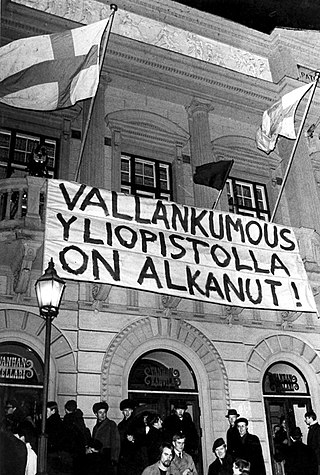
The takeover of Vanha was an uprising by a number of students on November 25, 1968, at the Old Student House of the University of Helsinki in Finland. It occurred on the night of the 100th birthday of the university's student union. The rioters took over Vanha during the celebrations, demanding changes to the university's administration and the curriculum.
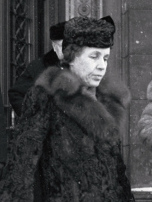
Gerda Ryti was the wife of Finland's fifth president, Risto Ryti, serving as the First Lady of Finland from 1940 until 1944.
